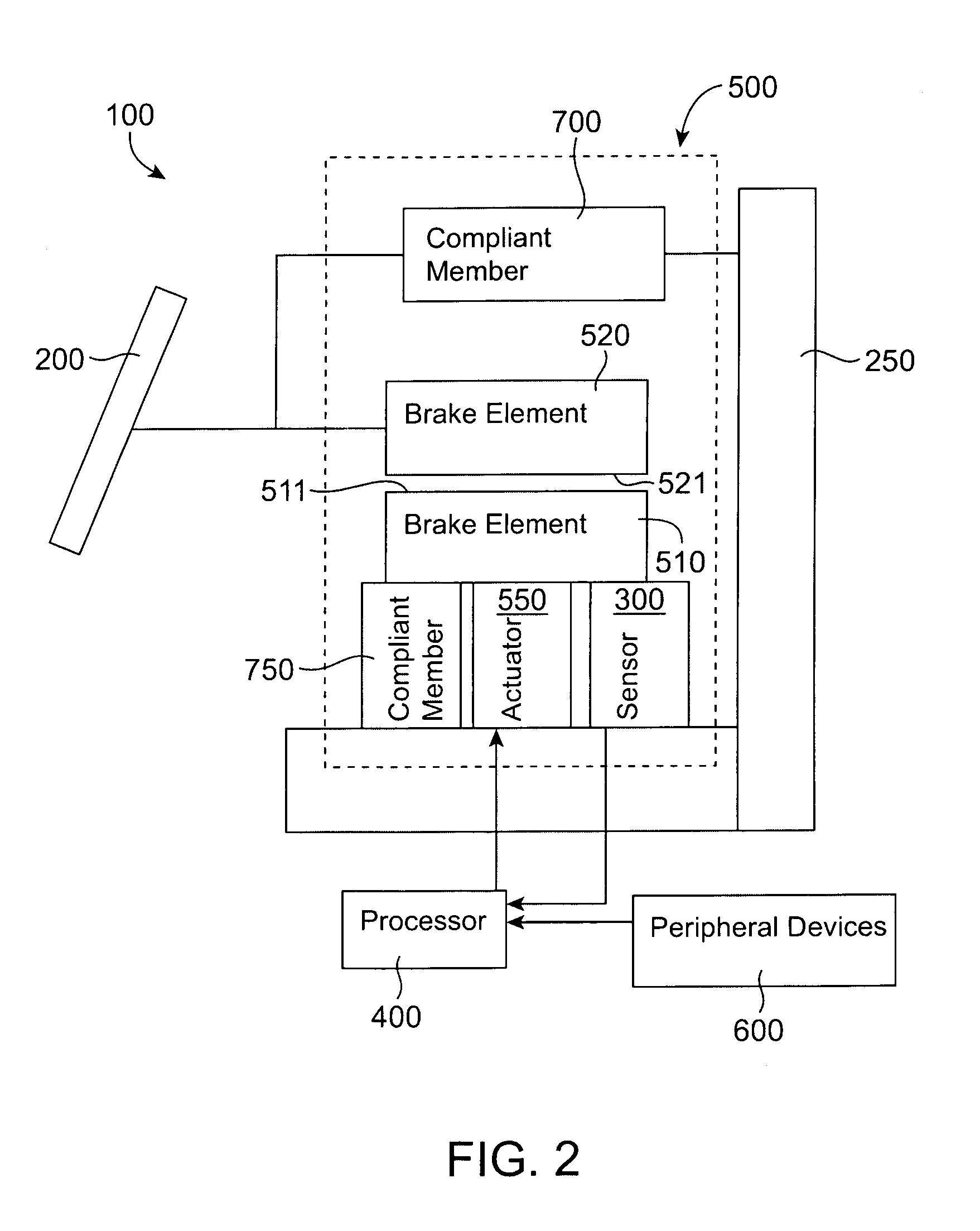Haptic throttle devices and methods
a technology of haptic throttle and throttle device, which is applied in the direction of electrical control, propulsion unit arrangement, vehicle components, etc., can solve the problems of known mechanical systems that reproduce and/or simulate the necessary friction, but are not ideal
- Summary
- Abstract
- Description
- Claims
- Application Information
AI Technical Summary
Benefits of technology
Problems solved by technology
Method used
Image
Examples
Embodiment Construction
[0015]An apparatus is disclosed that includes a sensor configured to be coupled to a throttle interface. The sensor is configured to output a sensor signal associated with a condition of the throttle interface. A first brake element has a first friction surface, and a second brake element has a second friction surface. The second brake element is configured to be coupled to the throttle interface. The friction surface associated with the first brake element is positioned opposite the friction surface associated with the second brake element. The first brake element is configured to move relative to the second brake element. An actuator is coupled to the first brake element and is configured to output haptic feedback to the throttle interface via the first brake element based on the sensor signal.
[0016]In other embodiments, a method includes receiving a first input signal from a throttle interface and outputting a sensor signal associated with the input signal, the sensor signal bein...
PUM
 Login to View More
Login to View More Abstract
Description
Claims
Application Information
 Login to View More
Login to View More - R&D
- Intellectual Property
- Life Sciences
- Materials
- Tech Scout
- Unparalleled Data Quality
- Higher Quality Content
- 60% Fewer Hallucinations
Browse by: Latest US Patents, China's latest patents, Technical Efficacy Thesaurus, Application Domain, Technology Topic, Popular Technical Reports.
© 2025 PatSnap. All rights reserved.Legal|Privacy policy|Modern Slavery Act Transparency Statement|Sitemap|About US| Contact US: help@patsnap.com



